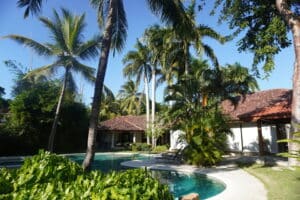
The people of the Dominican Republic
The people of the Dominican Republic are a diverse and colorful bunch. From the bustling city centers to the stunning beaches, there is something for everyone in this Caribbean island nation.
The population of the Dominican Republic is just over 10 million people, making it one of the smaller countries in the region. However, this doesn’t mean that the Dominican Republic isn’t a bustling and lively place to be. The country is home to a wide range of cultures and religions, making it a melting pot of sorts.
The people of the Dominican Republic are known for their warm and welcoming nature. They are always happy to help out their neighbors and are renowned for their generosity. This makes for an incredibly friendly and hospitable country, perfect for anyone looking for a vacation escape.
The culture of the Dominican Republic
The Dominican Republic is a Caribbean island country with an estimated population of 10.5 million people. The culture of the Dominican Republic is characterized by its mix of Spanish, African, and indigenous influences. The country’s capital, Santo Domingo, is home to a mix of colonial architecture and modern skyscrapers. The country’s cuisine is heavily influenced by its African and indigenous roots, with dishes such as Gallo pinto (a type of rice and beans dish) and tamales being popular. The Dominican Republic is also known for its Carnival celebrations, which are among the most colorful and lively in the world.
The history of the Dominican Republic
The Dominican Republic is a Caribbean island nation that has a population of approximately 10 million people. The country is located in the eastern Caribbean Sea and shares a border with Haiti. The Dominican Republic was first settled by the Taíno people in the 6th century AD. The Spanish arrived in the 16th century and claimed the island for Spain. The country became a republic in 1844. The Dominican Republic was invaded by the United States in 1916 and became a protectorate in 1916. The country became an independent republic in 1965.
The Dominican Republic is a member of the United Nations, the Organization of American States, and the Caribbean Community. The country has been affected by several natural disasters, including Hurricane Mitch in 1998, Hurricane Maria in 2017, and the Xtapolapa earthquake in 1976. The Dominican Republic is a member of the World Trade Organization and the General Agreement on Tariffs and Trade.
The history of the Dominican Republic is marked by significant political, social, and economic changes. The country has undergone several waves of modernization, including efforts to transition from an agricultural to an industrial economy, increasing access to education and health care, and developing new transportation systems. Despite these advances, poverty remains widespread throughout the country. In recent years, the Dominican Republic has made efforts to strengthen its economy through increased investment in tourism and agriculture.
The economy of the Dominican Republic
The Dominican Republic is a Caribbean island country that occupies the eastern two-thirds of the island of Hispaniola. With an estimated population of 10.8 million as of 2019, it is the most populous country in the Caribbean and the eleventh most populous country in the world. The Dominican Republic is a representative democracy, with its president serving as both head of state and head of government. The Dominican Republic has been a member of the United Nations since 1945 and the Organization of American States since 1961.
The economy of the Dominican Republic is largely based on agriculture and tourism. The country is one of the world’s leading producers of coffee, cocoa, sugarcane, tobacco, and bananas. Tourism is an important part of the Dominican Republic’s economy, with over 9 million tourists visiting the country annually. The country also has several mineral resources, including gold, silver, copper, and iron.










